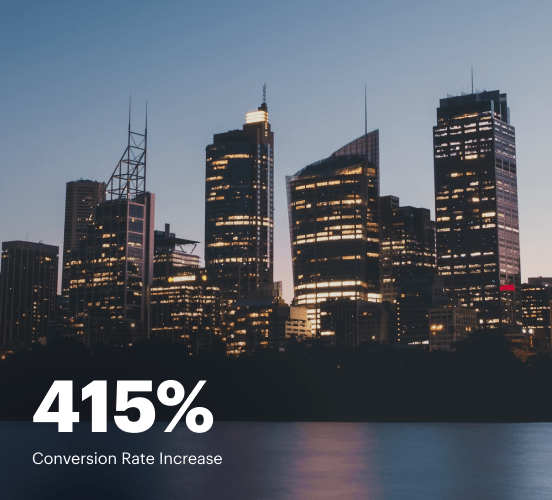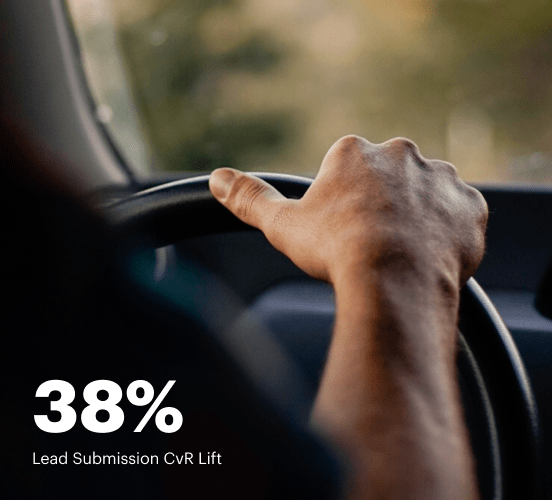Emma vs. Canva: the best platform for a seamless web experience
Discover how Emma compares to Canva regarding features and usability. Find out which platform provides the competitive advantage your business deserves.
Get startedSee how Instapage stacks up against the competition
| Feature | Instapage | Other builders |
| Drag-and-Drop Tools | ||
| Conversion-optimized templates | ||
| Manual and AI-powered A/B Tests | ||
| AI content suggestions | ||
| Popups and sticky bars | ||
| Canvas and grid blocks | ||
| Reusable and global elements | ||
| Form and popup builders | ||
| Built-in Heatmaps | ||
| Central analytics dashboard | ||
| Ad-to-page personalization and collections | ||
| Contacts, lists, and email | ||
| Dedicated, full-service CRO experts | ||
| Enterprise-ready platform |
Leading the way in building high-performing landing pages





Why Instapage is the smarter choice for your campaigns
Get everything you need to build, scale, and optimize high-converting landing pages—without coding.

Easier page building without coding
Instapage offers a flexible and seamless page creation experience with a library of 500+ conversion-focused layouts, Instablocks®, a drag-and-drop builder, and AI content generation. With technologies like Thor Render Engine®, you can create on-brand, mobile-responsive landing pages that load quickly and start converting during initial visitor clicks.

More insights — better results
Instapage lets you see in detail how each landing page experience and variation is performing so you can make targeted changes that boost page conversions. Use heatmaps for a better understanding of on-page activities, run A/B tests and AI-assisted experiments, and then track and evaluate results within robust analytics dashboards.

More personalized experiences
Instapage lets you quickly create high-performing landing pages tailored to each of your ad campaigns. Deliver personalized experiences for distinct audiences using dynamic text replacement. Effortlessly align specific advertisements to unique pages with AdMaps. Monitor audience-level metrics using our advanced data tools.

Built-in collaboration
Instapage collaboration capabilities bring your entire team together to speed up the process of landing page review, approval, and launch. No more frustrating and unnecessary revisions or edits scattered across emails. Provide instant feedback, conduct real-time page edits, and securely share your pages with outside stakeholders.

Free up time for your business
Invest time into business growth, not busy work. Launch landing pages faster with reusable forms and templates. Build once, reuse forever.
Explore all integrations






Easier page building without coding
Instapage offers a flexible and seamless page creation experience with a library of 500+ conversion-focused layouts, Instablocks®, a drag-and-drop builder, and AI content generation. With technologies like Thor Render Engine®, you can create on-brand, mobile-responsive landing pages that load quickly and start converting during initial visitor clicks.
More insights — better results
Instapage lets you see in detail how each landing page experience and variation is performing so you can make targeted changes that boost page conversions. Use heatmaps for a better understanding of on-page activities, run A/B tests and AI-assisted experiments, and then track and evaluate results within robust analytics dashboards.
More personalized experiences
Instapage lets you quickly create high-performing landing pages tailored to each of your ad campaigns. Deliver personalized experiences for distinct audiences using dynamic text replacement. Effortlessly align specific advertisements to unique pages with AdMaps. Monitor audience-level metrics using our advanced data tools.
Built-in collaboration
Instapage collaboration capabilities bring your entire team together to speed up the process of landing page review, approval, and launch. No more frustrating and unnecessary revisions or edits scattered across emails. Provide instant feedback, conduct real-time page edits, and securely share your pages with outside stakeholders.
Free up time for your business
Invest time into business growth, not busy work. Launch landing pages faster with reusable forms and templates. Build once, reuse forever.
Explore all integrationsGet started with Instapage in a few steps
-
Create your Instapage account
Start with Instapage by signing up via Google or your email. You'll get access to a free 14-day trial to discover Instapage capabilities. Feel free to cancel anytime during the 14-day trial if you decide that our product is not suitable for your business. -
Build and personalize your page
Create your first landing page from scratch or choose a template from 500+ customizable layouts. Use the drag-and-drop builder to add page elements, fonts, and backgrounds, refine content with AI, or add custom HTML, Javascript, and CSS. -
Review and make edits
Collaborate on page designs and streamline review processes. Invite your team members and stakeholders to review, edit, and provide feedback on your landing page. Collaborate knowing your page is confidential and only accessible to authorized users. -
Publish and track page performance
Publish your page to a domain or custom URL. Connect your pages to the ads you've created and track page performance within the analytics dashboard, run A/B tests and AI experiments, analyze results, and continuously optimize your landing page to maintain high conversions.
Emma vs. Canva: A Detailed Comparison with an Unexpected Twist
Navigating the vast landscape of digital marketing platforms can feel overwhelming, especially with leading contenders like Emma and Canva vying for attention. Both platforms are renowned for their unique offerings tailored to different marketing needs. With their engaging interfaces and effective tools, they promise marketers a chance to shine. In the crowded seas of email marketing and design tools, it's crucial to find out which diver features the best capabilities and fits your unique requirements. As we wade through the nuances, it's also pertinent to acknowledge a third player, Instapage, lurking in the background. This exploration will help reveal which platform may ultimately meet your marketing aspirations.
Introducing the Titans of the Digital Space
Emma and Canva stand tall as influential giants in the world of digital marketing, each offering invaluable resources to users. Emma is mainly recognized for its robust email marketing solutions that effortlessly create visually appealing campaigns, deep diving into analytics that help businesses understand their audience. Canva, on the other hand, is the go-to tool for stunning graphic designs, made accessible for anyone, regardless of their design prowess. Its intuitive drag-and-drop interface enables users to whip up eye-catching visuals in no time, making it a favorite among marketers. The strengths of these platforms not only highlight their individual capabilities but also set the stage for an exciting face-off. But don't let your guard down just yet; Instapage is waiting in the wings, ready to challenge both heavyweights. With this overview, we’re not only preparing to compare these platforms but to uncover which could be the best ally in digital marketing.
Feature Face-off: A Closer Look at Capabilities
In this round, we examine the prominent features of both Emma and Canva. Emma shines in its targeting capabilities, allowing users to segment audiences for tailored engagements. Its automation features are undeniably impressive, streamlining email campaigns with ease. Canva, on the other hand, impresses with its vast library of templates for various purposes—from social media posts to presentation slides. The collaboration tools are a favorite, making it easy for teams to work together seamlessly. While both platforms show significant strengths, the anticipation builds as users start to ponder the unsung hero warming up backstage—Instapage.
User-Friendliness: Navigating the Learning Curve
When it comes to usability, each platform caters distinctively to its audience. Emma, with its focus on email marketing, offers a friendly interface that welcomes novice marketers while also providing advanced tools for the experts. It’s not uncommon for newcomers to feel like they’re on a learning journey, guided by the straightforward layout. Canva, similarly, thrives in its simplicity, welcoming users with a diverse set of templates that reduce the guesswork often involved in design tasks. But make no mistake; both platforms come with their learning challenges, providing experienced marketers with an engaging adventure rather than a dreary task. Perhaps the greatest intrigue lies in the engagement of Instapage, which promises an equally welcoming user experience, fitting seamlessly into this dynamic landscape.
Key Features of Emma:
- Advanced email automation tools that streamline campaigns
- Robust analytics for tracking campaign performance
- Dynamic content personalization options
- Segmentation capabilities for targeted messaging
- Easy-to-use drag-and-drop editor for campaign creation
Core Features of Canva:
- Extensive library of templates for various design needs
- User-friendly drag-and-drop functionality
- Collaboration tools for seamless teamwork
- Variety of graphic elements including photos and illustrations
Common Strengths Shared by Both Platforms:
- Ease of use for beginners and pros alike
- Access to templates to kickstart projects
- Integration options with other marketing tools
- Real-time collaboration features
- Mobile-friendly designs for versatility
- Strong customer support resources
As both Emma and Canva spar in this competitive arena, the thought of Instapage adds another layer to this battle, presenting itself as a noteworthy alternative that could outshine both in key areas.
Performance Showdown: Speed and Responsiveness
In this round, we will focus on page loading times and mobile responsiveness—two factors that can drastically impact user experience. Imagine scrolling through a slow-loading landing page; it's akin to slogging through molasses on a frosty day, an experience no user has the patience for. Emma boasts rapid email loading times, ensuring that campaigns land in inboxes promptly. Canva's output, particularly with online designs, holds up well under scrutinizing conditions, designed for quick access across devices. In our connected world, both platforms now recognize the importance of having a mobile-friendly infrastructure to ensure users access content effortlessly, undeterred by sluggish performance. However, this competition only heats up as we consider Instapage, a platform designed with a performance-first mindset.
Support Resources: The Loyalty of a Trusty Sidekick
When discussing the support available to users, both Emma and Canva have built supportive ecosystems around their platforms. Emma offers various channels for assistance, from live chat to thorough documentation, ensuring users don't feel stranded. Canva's community resources are equally commendable, complete with tutorials and forums where users can seek guidance. It’s like having a trusty sidekick, always standing by with answers on hand. At this point, it's clear that the support aspect is crucial for enhancing user experience, and here too, Instapage shines with its dedicated resources tailored for users who may require a bit more guidance.
Pricing Showdown: Flexibility Matters
Advantages of Emma's Pricing Strategy:
- Tiered pricing plans to cater to different business sizes
- Trial options allowing users to explore features before commitment
- Transparent pricing with no hidden fees
- Feature-rich packages for enhanced value
Advantages of Canva's Pricing Strategy:
- Free tier available for essential features
- Affordable subscription plans for advanced tools
- Diverse pricing options catering to casual users and professionals alike
- Frequent discounts and promotional offers
The comparison of pricing strategies highlights that while Emma offers valuable tiered options perfect for growing businesses, Canva’s free offerings make it accessible for anyone starting. In comparison, Instapage’s flexible pricing strategy positions it wonderfully as a value-for-money champion.
With this competitive pricing structure, users receive a clear outline of what they could expect without the pesky surprises lurking beneath the surface, leading to months of dissatisfaction. Understanding which platform aligns with your budget while delivering quality services is paramount.
Then There’s Instapage: The Underestimated Challenger
As we conclude our analysis, here's where Instapage enters the scene as a potentially game-changing contender. Positioning itself as a landing page specialist, it offers features that address gaps left by Emma and Canva. Instapage’s unique value propositions—such as advanced A/B testing, integration options, and a seamless drag-and-drop editor—bring undisputed value to the table. The focus on conversion rates and clientele augmentation is a refreshing approach, catering to businesses aiming for maximum returns. With its variations and depth, it serves as both a guiding mentor and a strong competitor. In this rich landscape of digital tools, readers are encouraged to consider their marketing goals, and how platforms like Instapage might just elevate their campaigns to new heights.
In wrapping up this comparative analysis, the importance of making informed decisions cannot be overstated. Whether you're deciding between Emma, Canva, or the hidden gem Instapage, understanding their individual strengths will ultimately empower you to choose the platform best suited to achieve your goals.










